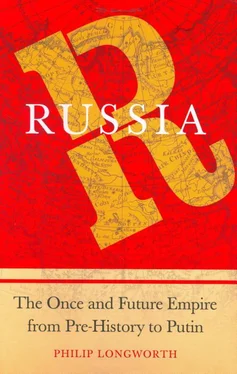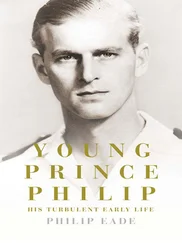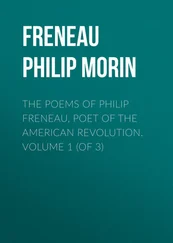Since their natural element was water, they searched for — and found — water routes to where they wanted to go. Since they now wanted to cross the great land mass of Russia, they followed the rivers. Their first important settlement in Russia, at what was to become known as Novgorod, provided access to the river Volkhov, and this eventually gave them access to other rivers. Local knowledge and information extracted from men who had made the journey, or part of it, served as their maps. They also knew how to build the boats they needed — boats capable of negotiating shoals and rapids, or of construction light enough to be hauled on to the shore and dragged around the obstacle or over portages, those hopefully short stretches of land which separated the headwaters of one river from another that flowed in a different direction.
At first such journeys tended to be slow and hazardous, but, as the commercial tempo picked up and the traffic became somewhat heavier, settlements appeared at the more popular landing points; people offered the venturers food, and sold them their services as guides, carriers and hauliers. By such means a trading system was established, and the country began to be opened up to the international commerce of the day. The most important axis was between Kiev and Novgorod. According to legend, the first Vikings to rule there were the adventurers Askold and Dir, though they were soon dispatched by local Russians. In fact co-operation, not conflict, was to be the mark of Viking—Russian relations. Mutual interest and dependence evidently outweighed natural caution and resentment of outsiders. The Vikings were to leave their imprint on Russia. Yet, rather than replacing or absorbing the Russian elites, within a very few generations they themselves were to be absorbed by them. Perhaps the Russians were already developing the capacity to control and integrate peoples of different language and culture which was to help them build empires in later ages.
The Russians themselves had already acquired definition. Fundamentally European in their genetic structure, they had been shaped by climatic and ecological conditions in their wooded steppe and forest habitat. These conditions helped to feed the Russian imagination and religious sensibility, and the dependence on agriculture in seasonally demanding, harsh conditions also contributed to the Russians’ distinctive ‘national’ profile. 26
By the ninth century, however, they had encountered, and begun to intermarry with, Finns and Baits as well as Vikings in the north-west; with Chuds and Cheremis (or Maris) in the north-east; and in the south with Khazars and a variety of other incomers from the Caucasus and the steppes of Central Asia. These circumstances seem to have encouraged an open-mindedness about strangers and a surprising absence of xenophobia compared to other European peoples (the Russians’ latter-day prejudice against blacks constitutes a glaring exception). A readiness to accept strangers into one’s ranks was to remain characteristic of them. In this respect Russian expansionism was to differ from that of the English, Dutch or pre-revolutionary French, and this attitude was to give Russia a certain advantage in empire-building. However, an empire presupposes a state, and a state had yet to be constructed.
This earliest Russia is visible only darkly. Our history so far has been a reconstruction by inference from disciplines other than history. The proto-Russians who inhabited the world we have described left no records that survived. In time they were to be encountered by other peoples, who did leave accounts of them, though these were scrappy at first, mostly based on hearsay, and often inconsistent with more reliable evidence.
Then, suddenly, in the ninth century, a Russian state burst on to the historical stage. Its emergence was due to a symbiosis of the agricultural elites who controlled the tribal confederations and the Viking traders from the north, but a third factor was to be of immense importance: Constantinople, capital of the later Roman Empire and the greatest city in the world. The Vikings had established themselves in Russia partly in order to gain better access than they already had to Constantinople and its riches. And when these two elements — the Vikings and Constantinople — came into contact, an electric charge was created which was to shake historical Russia into existence.
2
The First Russian State
FROM THE NINTH CENTURY onward written sources on Russia and the Russians become more plentiful. They come mostly from Imperial Constantinople, which, despite the rise of the Arabs and the appearance of a rival emperor, Charlemagne, in the West, was still the great power of eastern Europe and Asia Minor. But Icelandic sagas, the writings of Arab and Jewish merchants, and the first Russian chronicle also yield information. Together they allow us to reconstruct the process by which Russians became Christian (a term most of their descendants used to describe themselves a thousand years later) and the political implications of their conversion. They also describe the people who helped construct the first Russian state — the shrewd and vengeful widow Olga; Vladimir the sainted slave trader; the vain, resentful Sviatoslav; and Iaroslav the Wise.
The first Russian state — often referred as Kievan Rus — was essentially a commercial undertaking. It developed out of the mutual needs of Russians in the neighbourhood of what became the city of Novgorod and a band of Vikings in search of employment and plunder. The traders of Novgorod had been prospering and the population of their settlements had been growing, so a bigger food supply had to be assured. Since the soil of the area was poor, however, they had to take control of food producers over a large enough area to ensure an adequate supply They also needed to protect their settlements and their growing commercial interests from predators. It made sense, then, to retain the services of a band of Viking military specialists. 1From such a beginning, it seems, these Vikings in conjunction with the local Russian elite groups soon gained control of the transcontinental trade between Scandinavia, Constantinople (capital of the Roman Empire now that Rome itself had fallen to the barbarians) and the Orient. Until the middle of the ninth century their operations were confined to the northern part of the complex network of rivers that crossed the vast expanses of Russia. The southern part, already discovered by Arab traders in the seventh century, was controlled by the Khazars, a Turkic-speaking people whose territory centred on the Volga estuary and the northern Caucasus and whose rulers were to convert to Judaism in the 86os. 2Yet emergent Russia was not fated to be part of a Jewish empire. It was the Vikings who eventually gained control of the long river route with all its portages, and who, intermarrying with women of the Russian tribes with whom they dealt, were to become rulers of the Russian lands.
Their first, legendary, leader was a Jutlander called Riurik. He had made a reputation raiding in western Europe, including the British Isles, but then decided to turn east to seek his fortune. Around 856 he and his followers established a base at Ladoga in northern Russia. Subsequently, however, he decided that the area of Novgorod (which the Vikings knew as Holmgarthr) was better situated, and so he built a fort there. Novgorod was to be the key access point to the Russian river route for traders coming from the west. But, as these Vikings probably already knew, Kiev was the key point in the south. It had access to the Dnieper river system, which led to the most populous areas of Russia at that time. Kiev was ruled by the Khazars, but in 858 a Viking war band led by Askold and Dir took command of it. The ambition of these two adventurers soon extended further, and two years later, accompanied by a large force of Russians, they raided Constantinople. The city was heir to the imperial as well as the newer Christian traditions. Its language was now Greek rather than Latin, and since it is commonly referred to nowadays as the Byzantine Empire that is what we shall call it.
Читать дальше





![Stephan Orth - Behind Putin's Curtain - Friendships and Misadventures Inside Russia [aka Couchsurfing in Russia]](/books/415210/stephan-orth-behind-putin-s-curtain-friendships-a-thumb.webp)





